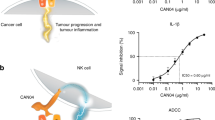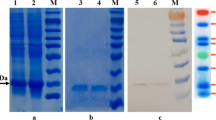Abstract
Our previous experimental studies have shown that the best approach to increase the biological anti-tumour activity of interleukin 2 (IL-2) is not co-administration of another cytokine, but the association with immunomodulating neurohormones, in an attempt to reproduce the physiological links between psychoendocrine and immune systems, which play a fundamental role in the regulation of the immune responses. In particular, the association with the pineal neurohormone melatonin (MLT) has been shown to cause tumour regressions in neoplasms that are generally non-responsive to IL-2 alone. To confirm these preliminary results, a clinical trial was performed in locally advanced or metastatic patients with solid tumours other than renal cell cancer and melanoma. The study included 80 consecutive patients, who were randomised to be treated with IL-2 alone subcutaneously (3 million IU day-1 at 8.00 p.m. 6 days a week for 4 weeks) or IL-2 plus MLT (40 mg day-1 orally at 8.00 p.m. every day starting 7 days before IL-2). A complete response was obtained in 3/41 patients treated with IL-2 plus MLT and in none of the patients receiving IL-2 alone. A partial response was achieved in 8/41 patients treated with IL-2 plus MLT and in only 1/39 patients treated with IL-2 alone. Tumour objective regression rate was significantly higher in patients treated with IL-2 and MLT than in those receiving IL-2 alone (11/41 vs 1/39, P < 0.001). The survival at 1 year was significantly higher in patients treated with IL-2 and MLT than in the IL-2 group (19/41 vs 6/39, P < 0.05). Finally, the mean increase in lymphocyte and eosinophil number was significantly higher in the IL-2 plus MLT group than in patients treated with IL-2 alone; on the contrary, the mean increase in the specific marker of macrophage activation neopterin was significantly higher in patients treated with IL-2 alone. The treatment was well tolerated in both groups of patients. This study shows that the concomitant administration of the pineal hormone MLT may increase the efficacy of low-dose IL-2 subcutaneous therapy.
This is a preview of subscription content, access via your institution
Access options
Subscribe to this journal
Receive 24 print issues and online access
$259.00 per year
only $10.79 per issue
Buy this article
- Purchase on SpringerLink
- Instant access to full article PDF
Prices may be subject to local taxes which are calculated during checkout
Similar content being viewed by others
Author information
Authors and Affiliations
Rights and permissions
About this article
Cite this article
Lissoni, P., Barni, S., Tancini, G. et al. A randomised study with subcutaneous low-dose interleukin 2 alone vs interleukin 2 plus the pineal neurohormone melatonin in advanced solid neoplasms other than renal cancer and melanoma. Br J Cancer 69, 196–199 (1994). https://doi.org/10.1038/bjc.1994.34
Issue Date:
DOI: https://doi.org/10.1038/bjc.1994.34
This article is cited by
-
Rescue of dendritic cells from glycolysis inhibition improves cancer immunotherapy in mice
Nature Communications (2023)
-
Melatonin and urological cancers: a new therapeutic approach
Cancer Cell International (2020)
-
Molecular mechanisms of melatonin’s inhibitory actions on breast cancers
Cellular and Molecular Life Sciences (2013)
-
The efficacy and safety of melatonin in concurrent chemotherapy or radiotherapy for solid tumors: a meta-analysis of randomized controlled trials
Cancer Chemotherapy and Pharmacology (2012)



